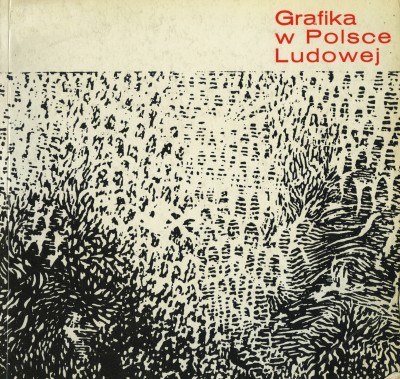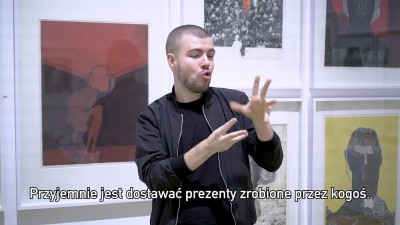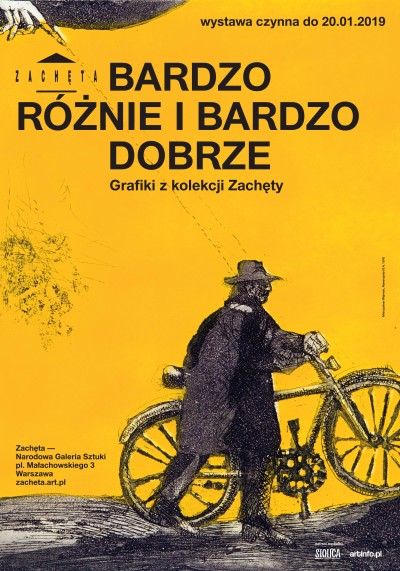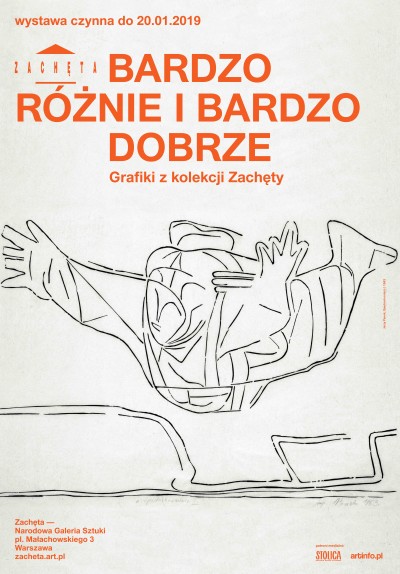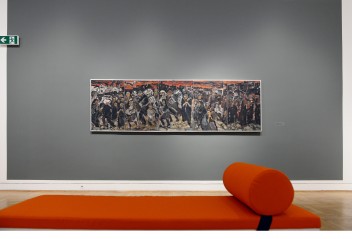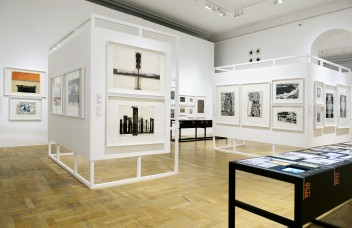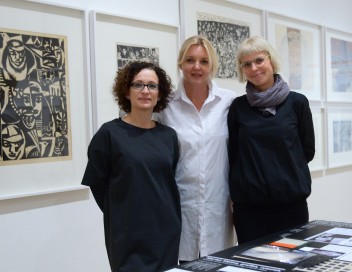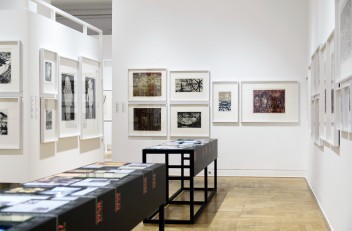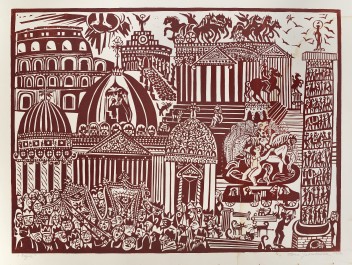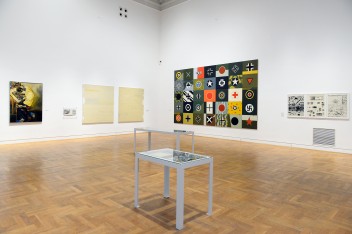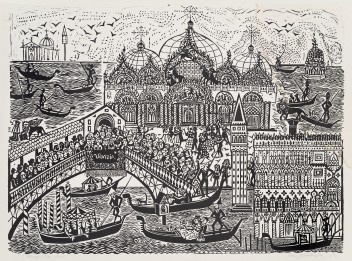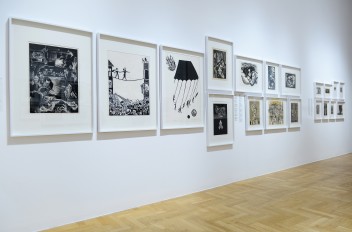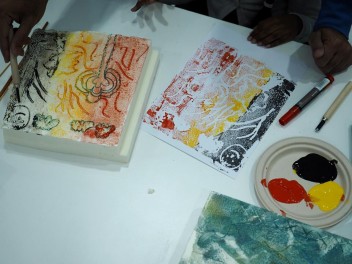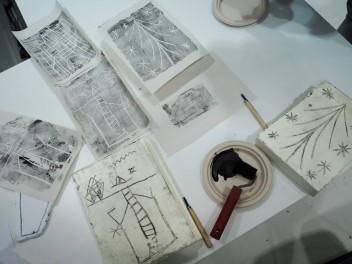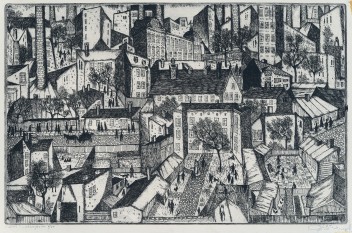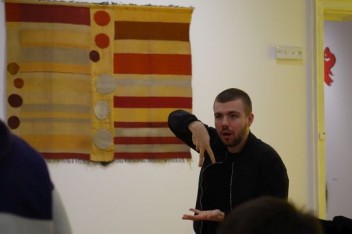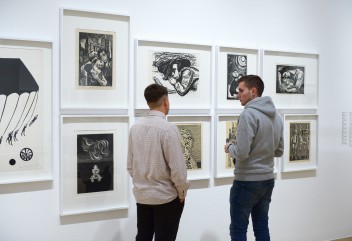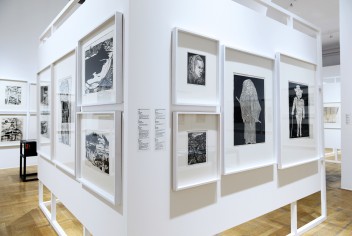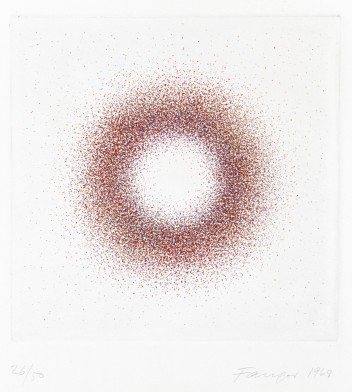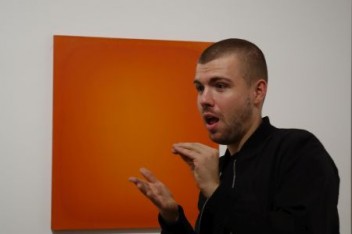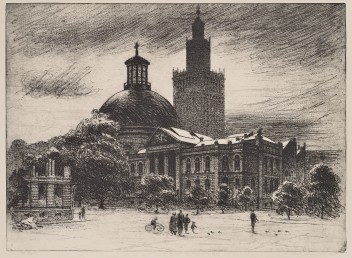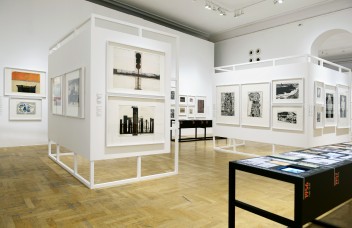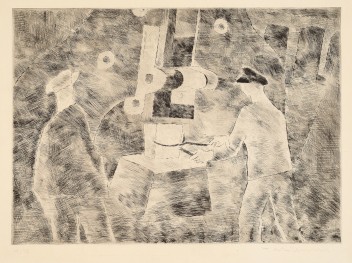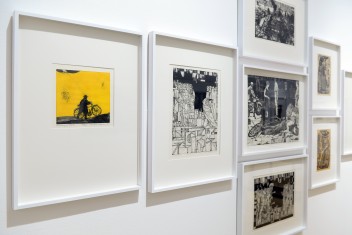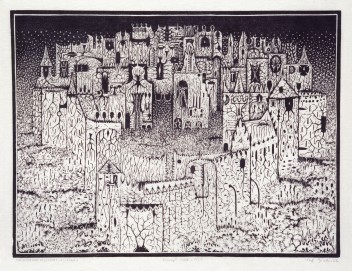Very Diverse and Very Exquisite Graphics from the collection of Zachęta
09.11.2018 – 20.01.2019 Very Diverse and Very Exquisite Graphics from the collection of Zachęta
Zachęta – National Gallery of Art
curators: Małgorzata Bogdańska, Joanna Egit-Pużyńska, Maria Świerżewska (collection and inventory department)
exhibition design and visual identification: Lotne Studio
exhibition production: Anna Muszyńska, Krystyna Sielska and team
artists: Antoni Alster, Alojzy Balcerzak, Janina Biała-Szypuła, Krystyna Bieniek, Edward Biszorski, Antoni Boratyński, Elżbieta Bors, Ryszard Bors, Stanisław Borysowski, Zofia Broniek, Franciszek Bunsch, Franciszek Burkiewicz, Halina Chrostowska, Stefan Damski, Maria Dawska, Stanisław K. Dawski, Barbara Dega-Komitowska, Mieczysław Detyniecki, Ryszard Leon Dudzicki, Wanda Ficowska-Wapińska, Jacek Gaj, Stanisław Gawron, Józef Gielniak, Magdalena Gomulicka-Damska, Maria Hiszpańska-Neumann, Tadeusz Jackowski, Teresa Jakubowska, Zenon Januszewski, Władysław Jarocki, Mieczysław Jurgielewicz, Andrzej Kandziora, Danuta Kołwzan-Nowicka, Izolda Kotlarczyk, Józef Kotlarczyk, Zygmunt Kotlarczyk, Bogna Krasnodębska-Gardowska, Janina Kraupe-Świderska, Ryszard Krzywka, Irena Kuran-Bogucka, Jadwiga Leśkiewicz-Zgieb, Benon Liberski, Maria Łuszczkiewicz-Jastrzębska, Mieczysław Majewski, Marian Malina, Lucjan Mianowski, Tadeusz Milewski, Maciej Modzelewski, Jerzy Napieracz, Barbara Narębska-Dębska, Anna Nehringowa, Bronisław Nowicki, Emilia Nóżko-Paprocka, Danuta Osadczy, Józef Pakulski, Jerzy Panek, Olga Peczenko-Srzednicka, Andrzej Pietsch, Edmund Piotrowicz, Henryk Płóciennik, Janusz Przybylski, Aleksander Rak, Stefan Rassalski, Łukasz Rogiński, Leszek Rózga, Andrzej Rudziński, Marek Sapetto, Roman Skowron, Konrad Srzednicki, Paweł Steller, Stefan Suberlak, Ewa Śliwińska, Aleksander Turek, Wacław Waśkowski, Maria Wąsowska, Mieczysław Wejman, Teresa Wierus
Graphics are the most numerous and at the same time the least known works in the Zachęta collection. The individual objects included in the exhibitions have never allowed the broader audiences to look at the whole of the collection in a broader way. Therefore, we wanted to recall a genre that occupied such an important place on the artistic scene a few decades ago, and over the last 30 years has been gradually marginalised. The 2,100 works in our collection are a very diverse set in terms of style, quality and form; with particularly outstanding works from the 1960s. We noticed their consistency, high artistic level, as well as combination of traditional techniques with the search for new formal solutions, so characteristic of graphic arts.
This is the first presentation of a workshop graphic arts from the Zachęta collection. The selection focuses on the period determined conventionally by two exhibitions organised by the Central Office of Artistic Exhibitions — the 1st National Exhibition of Graphic Arts and Drawing in 1956 and the Graphic Arts in the Polish People’s Republic in 1971. It was a time of great significance of this medium, which could be seen in particular in the activity of our institution — many successful graphic arts exhibitions took place in Zachęta at that time, including national presentations, reviews, anniversary exhibitions as well as individual shows. In 1962, for example, the CBWA prepared 55 exhibitions, ten of which were exhibitions of graphics. At the same time, the institution organised travelling exhibitions aimed at promoting and educating the audiences, presented in local BWA branches, community centres and even workplaces. In some years as many as 10 sets of graphics were circulating in Poland at the same time!
In an attempt to recreate the history of Zachęta’s collection, we used archive materials. It was fascinating to discover the history of individual works, and how many of them were presented at these exhibitions. This became the key to the selection of about 200 works by 80 artists, while the narrative of the exhibition, inspired by specific shows, was built on the basis of the most popular themes at that time.
‘The richness of techniques, experimentation, the search for new forms of artistic expression on the one hand, and perfect use of spots, lines and colour on the other — all this shows us how far the graphic arts has departed from its traditional narrow circle’, wrote Kira Gałczyńska in Kurier Polski about the 2nd National Exhibition of Graphic Arts and Drawing in 1959. There are many such reviews: often emotional, engaged, and even if critical of particular works or exhibitions, they always emphasise the high level of this field of art. The title of our exhibition was also inspired by one of them: (haes), ‘Very diverse and very exquisite. 4th National Exhibition of Graphic Arts’ (Słowo Powszechne, no. 300, 1969). We also found photographs documenting old exhibitions, posters and catalogues of the project by outstanding graphic designers interesting and fascinating. In order to present a broader context, as well as the 1960s atmosphere of Zachęta, we decided to present some of these materials next to the graphics themselves.
We regularly organise exhibitions of collections related to various aspects of their creation, profiling and functioning. Once again, the history of the institution becomes an important point of reference for the presentation of the works; however, what is also important here, is to present the individual works, which charm with their originality, to the general audience.
Wejman Mieczysław, Cyclist IX A, 1970, from the Zachęta collection
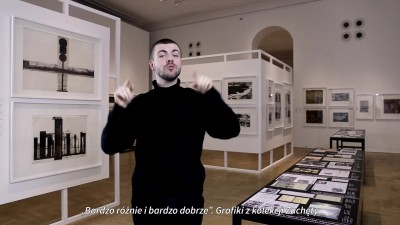
Very Diverse and Very Exquisite
Graphics from the collection of Zachęta
09.11.2018 – 20.01.2019
Zachęta – National Gallery of Art
pl. Małachowskiego 3, 00-916 Warsaw
See on the map
Godziny otwarcia:
Tuesday – Sunday 12–8 p.m.
Thursday – free entry
ticket office is open until 7.30 p.m.

